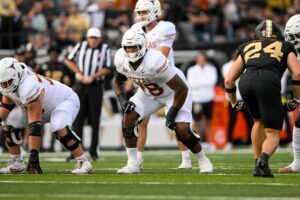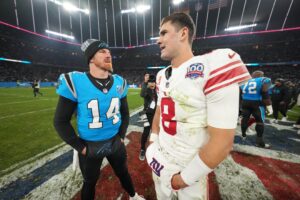On Friday, the New Orleans Saints trade Brandin Cooks to the New England Patriots for their first (#32) and third-round (#103) picks. The original trade talks consisted of the Patriots giving up Malcolm Butler for Cooks, and many fans’ initial reaction to this was that it’d be a luxury pick. Giving up a corner that flourished in Bill Belichick’s system would put them too thin at that spot and that might not benefit the Patriots.
Giving up a couple picks instead makes much more sense. A direct comparison between Cooks’ quality and the pick, the average person would say he’s worth the 32nd overall selection in the draft. This is perhaps the biggest blockbuster exchange of the off-season yet, and a trade breakdown is below to analyze what this does for both teams.
Trade Breakdown: Quick Thoughts on the Brandin Cooks’ Trade
Saints use picks to rebuild on defense
Offensively, the Saints still possess one of the most deadly quarterbacks in the league in Drew Brees. One of the primary causes of this trade from the Saints perspective was the emergence of Michael Thomas, in addition to offensive names like Willie Snead, Coby Fleener, and even Mark Ingram producing in the aerial attack.
However, the front office must work hard to revitalize a defense that even Rob Ryan couldn’t save. The Saints approach to the first round should be to take the best player. They don’t have depth or a lot of reliability anywhere, and there are some quality edge-rushers in this draft class that are worth some hard looks.
Patriots get their player
If media reports indicate anything, it’s that the executives in Foxboro made a hard push for a guy they really wanted. The upside here is ridiculous. Brandin Cooks is a sure bet, and will definitely flash his athleticism in the final year of his rookie contract. It’s way too early to compare him to Randy Moss, Brady hasn’t had a more athletic receiver since the future Hall-of-Famer graced Foxboro with his presence.
It’s a mistake to peer too far into the future due to the Patriots cut-bait tendencies. But best case scenario, things go well and the youthful receiver could potentially draw an extension from the front office.
Can Cooks Adjust?
After only three seasons with the Saints, a receiver of Cook’s caliber will be able to adjust to a play-style that has a similar feel tempo-wise. Cooks played more outside, and that works for a Patriots offense that primarily used Chris Hogan in that role in 2016. Putting Cooks on the outside will allow Julian Edelman to do what he does best in the slot; and dictates the wide receiver offensive formations that fans will likely see in 2017.
Who wins who loses?
Neither team really lost in this trade, but the Patriots win this exchange simply because they’re more comfortable with their roster on both sides. The justification here is that they can live without those two picks in this draft in the event that Cooks doesn’t work out.
The Patriots make their living in the draft on volume of picks, always ensuring that they have competition and depth at the positions that matter. The picks that the Patriots relinquish will never be back-breakers; seeing as they’ve made first-round selections at #29 or higher the past seven years. Obviously there will be more to analyze once the Saints make their selections in April. However for now, it’s an uphill battle for the 7-9 squad.
Main Photo






